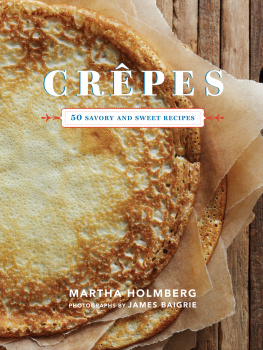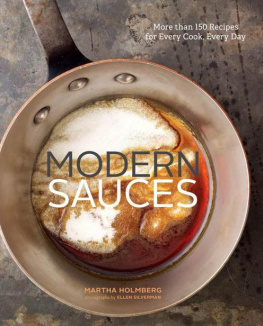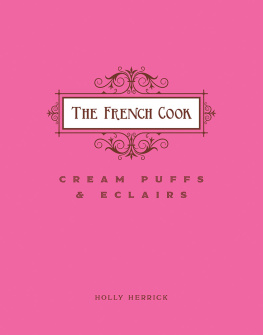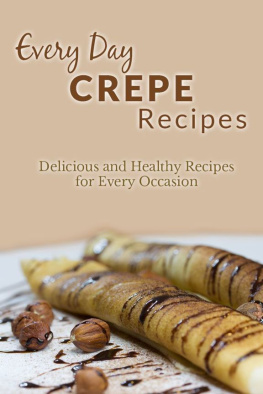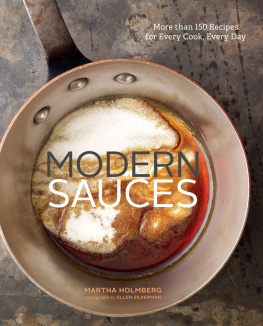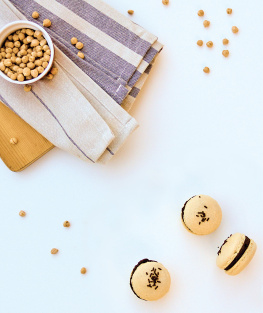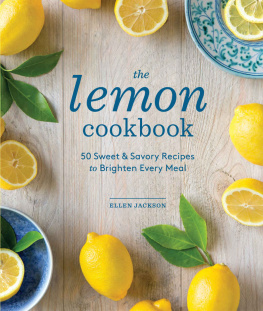

Gigantic and grateful hugs go to Caroline Ford in Portland, whose prodigious skills in the kitchen (and her iPad) kept the recipe-testing train rolling, and to Denise Mickelsen in Connecticut, who functioned as my left brainanalyzing pan diameters, cup-to-gram ratios, and the best way to describe how to flip, fill, and fold a crepe. Thanks also to clever cooks Sara Bir, Danielle Centoni, Linda Faus, Kir Jensen, Ivy Manning, and Laura Byrne Russell whoalong with Caroline and Denisecontributed delectable crepe recipes to the book and helped with testing. #awesomefriends.
On the Chronicle team, thank you to friend and editor Bill LeBlond for giving me the chance to explore this most delicious topic, and thanks to editor Sarah Billingsley for knitting all the threads of the project together with such skill and grace. A bonus pleasure for any cookbook author is seeing how someone translates your recipes into visuals. Chronicle Books is the master at that, and my admiration and thanks go to Suzanne LaGasa, Emily Dubin, Doug Ogan, Claire Fletcher, Tera Killip, David Hawk, Peter Perez, James Baigrie, George Dolese, and Elisabet der Nederlanden for turning my ideas into this beautiful book.
I went to cooking school in Paris, but it wasnt from my toque-clad teachers that I learned to make crpes. It was from my junior high school friend Tanni Young, when we lived in Arlington, Virginia. We would restore ourselves after a long day of being fourteen-year-old girls by making crpes filled with cheddar cheese as an after-school snack. Im sure those crpes were short on finesse, but I still remember how satisfying it was to turn and tilt the pan, watch the liquid batter travel across its surface until no more pan was visible, and then wait until the steam rising from the crpe slowed down, the signal that it was time to flip it. A few seconds of cooking on the second side, a shower of grated cheese, a flick of the spatula to fold the crpe in half, and we had an awesome snack, ready to eat in all its gooey, cheesy goodness.
While our peers were enjoying Cheetos, we were eating crpes. We felt special because crpes were special. Even though theyre related to the homey pancake, crpes have an allure that I think is about more than the way they taste. Depending on what your first crpe experience was, they can feel elegant, exotic, nostalgic, sophisticated, indulgent, or comforting.
As youll see when you look at the recipe list in this book, crpes fit the bill for almost every eating occasion: breakfast, brunch, a quick afternoon treat, an hors doeuvre to serve with a glass of sparkling crmant de Loire, a plated hors doeuvre for a fancy dinner, a main course for a family (or fancy) dinner, and desserts galore. If you tried, you could work crpes into the soup and salad courses, too (a chiffonade of crpes in consomm is a famous soup, but for the purposes of this book, were not ranging that far.
In other words, crpes are versatile. And the place where versatile, special, and easy intersect is the place every smart cook wants to be.
The crpes in this book are simply ones that I think are delicious, fun, and worth the effort to make. The recipes make use of a broad range of ingredientscheeses, meat and chicken, fresh vegetables, seafood, fruit, and, of course, chocolate. And they also give a nod to the seasons: Asparagus and Prosciutto Crpes with in summer. Youll find cocktail crpes and brunch crpes and main dish crpes, but sometimes how and when you serve the crpes just depend on you. Many of the recipes can suit more than one type of meal.
Theres only room for about four dozen recipes in the book, so Ive left out a lot of classic crpe recipes. You wont find your Hungarian grandmothers palacsinta nor an authentic Brittany galette complte with a fried egg plopped in the center (I never did like those fried-egg crpes!), but I hope you will find many recipes to love and to fold into your repertoire of favorite things to cook.
Ive arranged the recipes so that you start with the basic crpe recipes themselves. is the workhorse of the book and serves as a good choice for just about any of the recipes. But you have five other basic crpe recipes to choose from, depending on the flavor or texture you would like to bring to your dish.
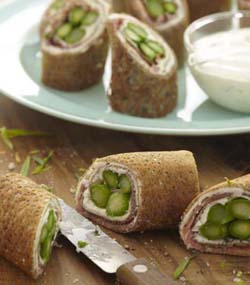
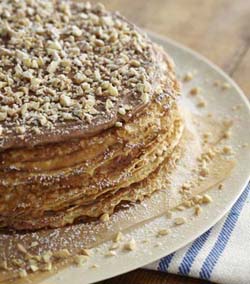
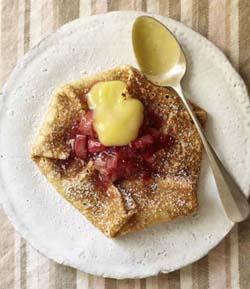
Let me start by telling you that you dont need a fancy crpe pan to make beautiful crpes. You can use just about any panan actual crpe pan, an omelet pan, or a plain old skilletas long as it has a heavy, flat bottom surface. Its okay if the sides of the pan are curved, but the base of the pan should have the same diameter that you want for your crpes. For most of the recipes in this book, youll need 8-in/20-cm crpes. But dont worry if you dont have a pan with an 8-in/20-cm bottom on hand. If your best pan for the job will make 7-in/17-cm crpes, or even 9-in/23-cm crpes, its going to be okay. Adjust the fillings in the recipes accordingly, and your crpes will still be delicious.
Nonstick or not? For years, I used a beat-up nonstick crpe pan that had a lovely 1970s harvest gold enamel exterior; my mom must have gotten it as a gift. But that pan bit the dust ages ago, and all of my recent crpes have slid with ease from my go-to skillet: a Calphalon stainless-steel model. Its not nonstick; it simply has a nicely seasoned surface that allows me to cook eggs, fish, or whatever I want without the food sticking. The heavy base delivers even heat, which is very important for frying crpes.
A nonstick surface does forgive a multitude of sins, however, so if you want a foolproof option, look for a good-quality nonstick skillet that feels heavy and well made. Even with nonstick, good heat distribution is important. Some nonstick crpe pans on the market feel more like novelty pans than hardworking cookware, so be judicious.
Another option is a real French crpe pan made of blue steel (also sometimes called black steel). Making crpes with one is a lovely experience. This type of pan is inexpensive and makes you feel quite Parisian as you produce perfect, lacy crpes from this timeless-looking, bare-bones pan, the design of which probably hasnt changed in 150 years. I bought an 8-in/20-cm blue steel pan for developing the recipes in this book and got good-looking crpes with ease, right from the start. But you do need to season this type of pan before you start to cook, so read the instructions that come with it. And these pans will rust in a heartbeat, so be sure to dry them thoroughly after a gentle washing with hot water and a drop of dish soap. No dishwasher, please.
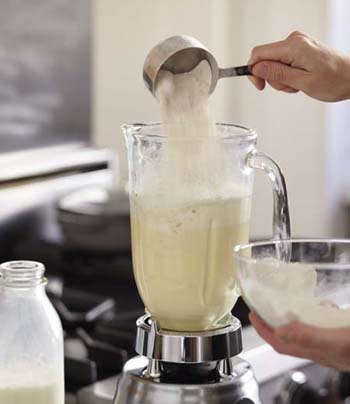
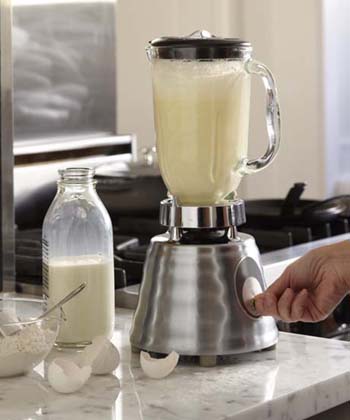
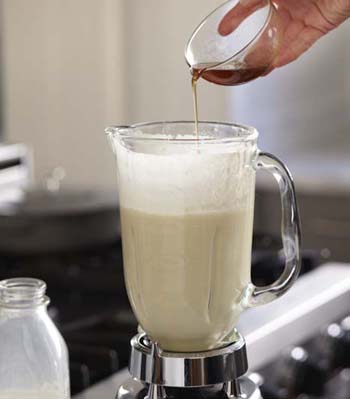
Next page
